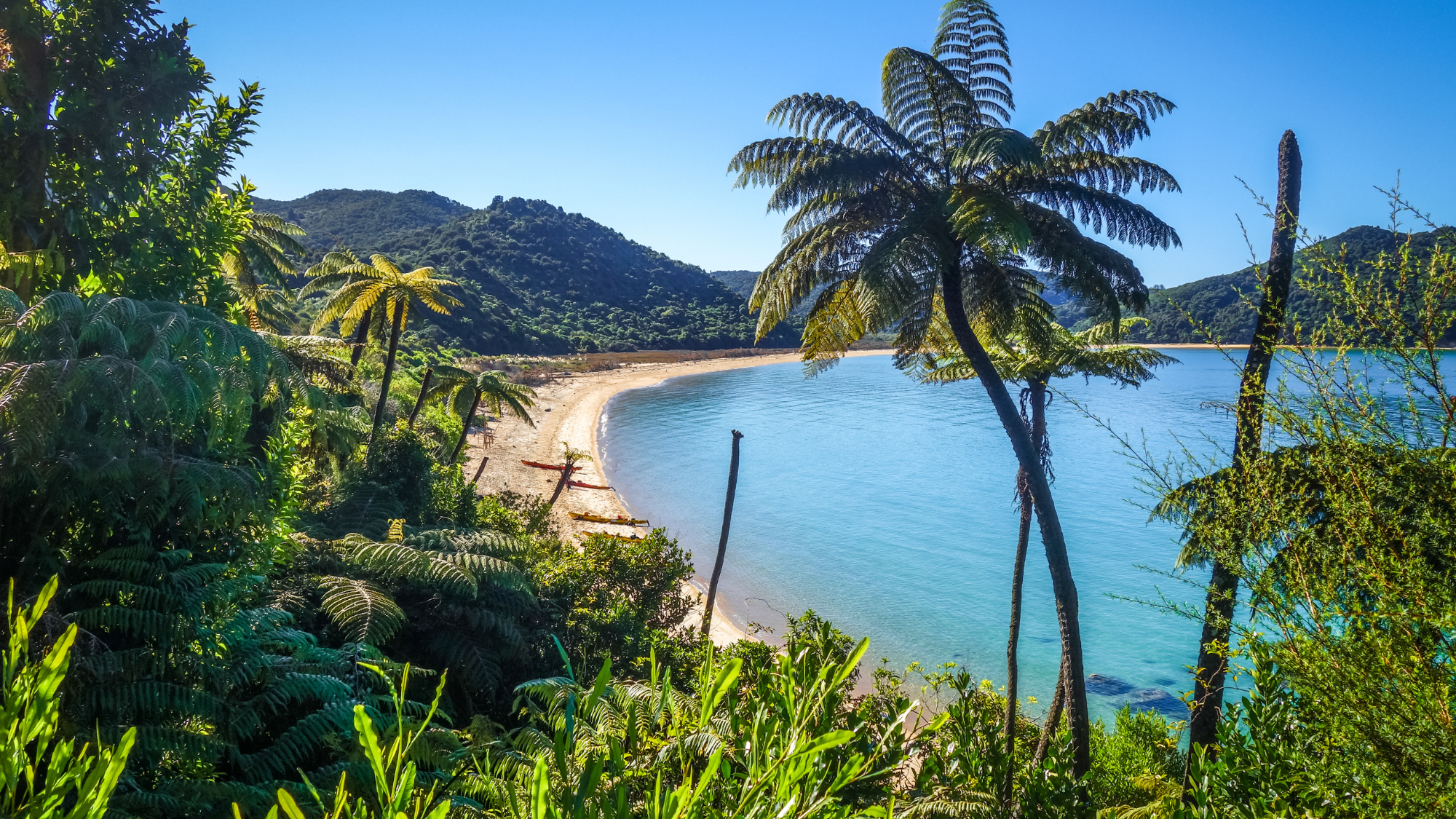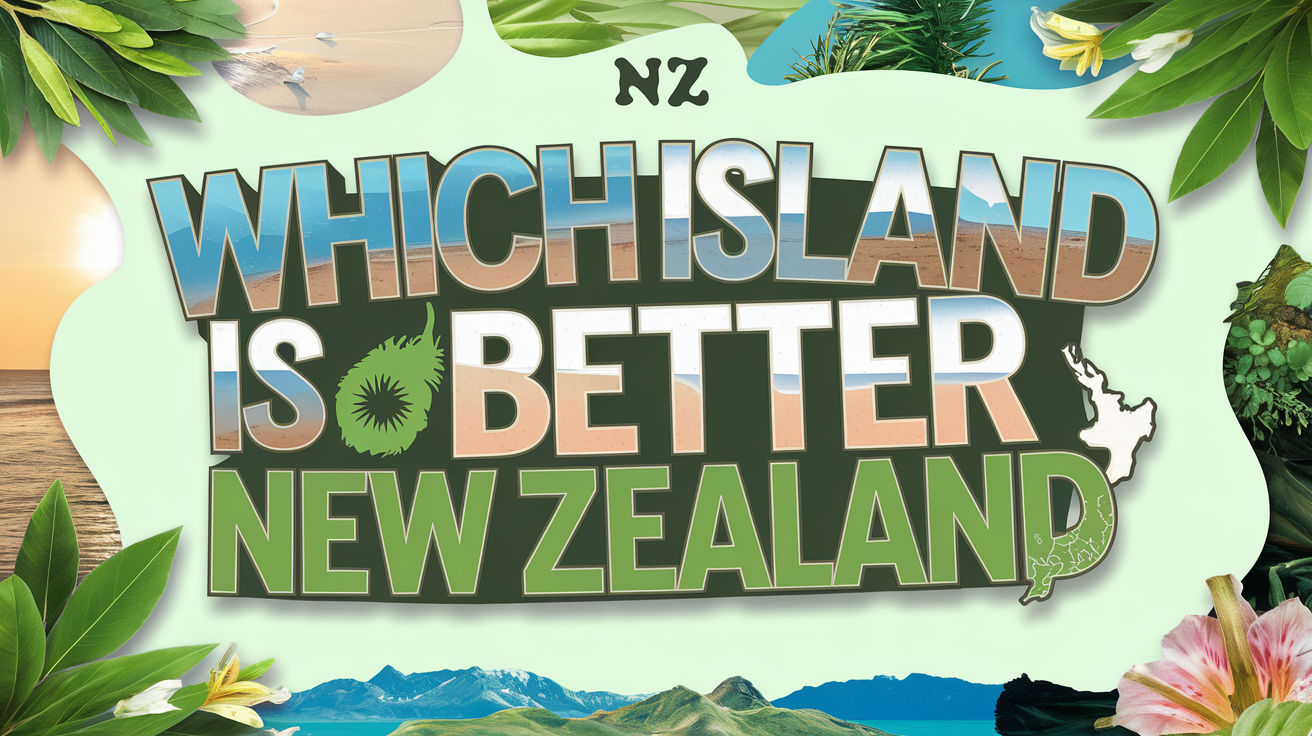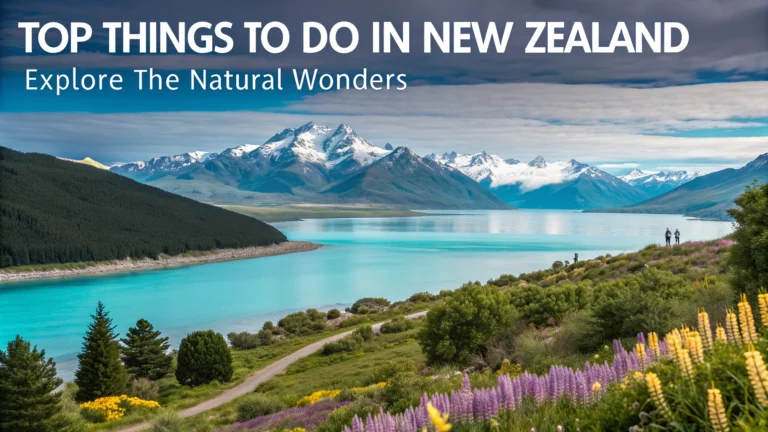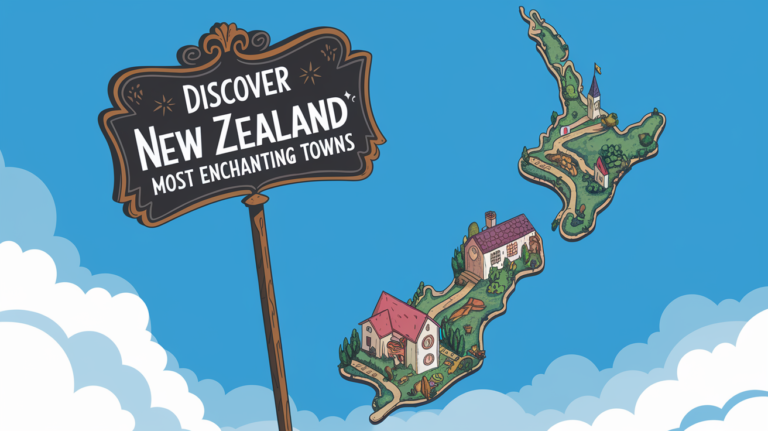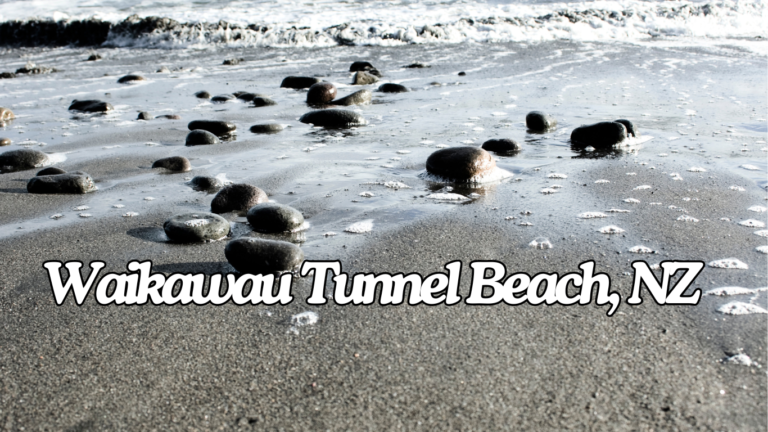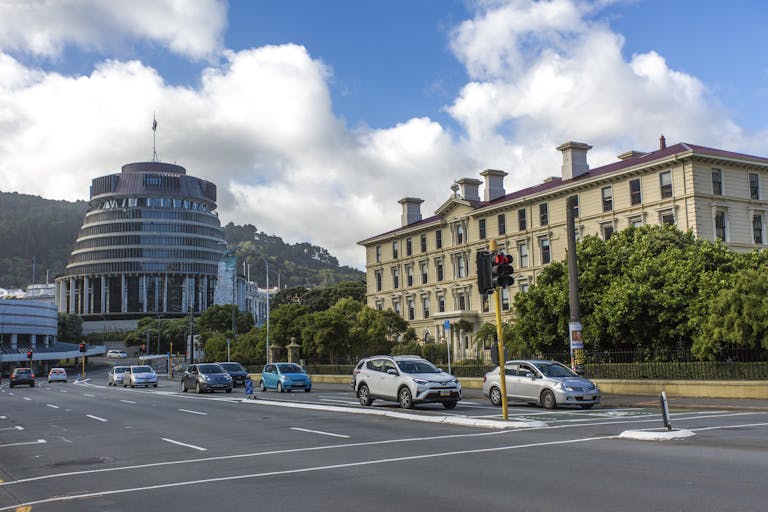Abel Tasman National Park
You’ll find Abel Tasman National Park nestled at the northern tip of New Zealand’s South Island, where golden beaches meet crystal-clear turquoise waters along 237 square kilometers of pristine coastal wilderness. The park’s unique landscape offers diverse experiences, from hiking the 51km coastal track to kayaking alongside dolphins and seals in the Tonga Island Marine Reserve. You can access this protected paradise only by foot or boat, with camping and lodge options available throughout. Whether you’re seeking a day trip or a multi-day adventure, you’ll need to plan ahead to protect and fully experience this delicate ecosystem’s natural wonders.
Key Takeaways
- Abel Tasman National Park is a pristine wilderness area covering 237.1 km² at the northern tip of New Zealand’s South Island.
- The park features golden sand beaches, turquoise waters, and coastal tracks accessible only by foot or boat travel.
- Visitors can explore the 51-kilometer Abel Tasman Coast Track, which typically takes 3-5 days to complete.
- The park offers 18 designated campsites and various accommodation options, from luxury lodges to traditional bachs.
- The area is rich in marine life, featuring over 200 fish species, dolphins, seals, and diverse bird populations.
Park Overview and Location
Abel Tasman National Park is a pristine wilderness area nestled at the northern tip of New Zealand’s South Island. You’ll find this natural gem bordered by the sparkling waters of Golden Bay / Mohua and Tasman Bay to the north.
Covering an impressive 237.1 km² (91.5 sq mi), the park encompasses not only mainland territory but also several offshore islands, including the Tata Islands and Tonga Island.
This protected area boasts a stunning coastline with wide stretches of golden sand meeting the green sea. It’s a haven for nature enthusiasts and adventure seekers alike. However, you’ll need to plan your visit carefully, as access is limited to foot or boat travel only.
There are no shops or modern conveniences like Wi-Fi or phone signals within the park’s boundaries.
The park’s unique geography creates extreme tidal changes, offering diverse experiences throughout the day. At high tide, you can explore the coastline by kayak, while low tide reveals expansive beaches perfect for walking.
These tidal fluctuations require careful planning for activities like hiking and kayaking. Remember to book accommodations and transportation in advance to guarantee availability in this remote paradise.
Getting There and Access
While reaching this remote paradise requires some planning, you’ll find several options for accessing Abel Tasman National Park. Located at the top of New Zealand’s South Island, the park is accessible only on foot or by boat, offering a true wilderness experience without shops or digital connectivity.
To plan your visit, download a detailed walking map from the Department of Conservation (DOC) website. This invaluable resource will help you navigate the park’s trails and beaches.
Water taxis provide transportation to and from various points within the park, allowing you to customize your hiking experience. For multi-day treks, you can arrange bag transfers via water taxi, lightening your load as you explore.
The nearest towns, Kaiteriteri and Marahau, serve as gateways to the park. Kaiteriteri, with its beautiful beach, is the departure point for larger water taxis.
Both towns offer accommodation options, including the eco-friendly Kimi Ora Eco Resort in Kaiteriteri. If you prefer to stay a bit farther out, Motueka and Nelson are within driving distance and provide additional lodging choices.
Accommodations and Camping Options
You’ll find diverse accommodation options in and around Abel Tasman National Park.
Within the park, you can camp at designated sites, which require advance booking and range from $16 to $42 per night.
For those seeking more comfort, you can choose from luxury lodges like Awaroa Lodge or rent a traditional Kiwi bach in Torrent Bay, while nearby towns like Motueka and Nelson offer additional lodging choices outside the park boundaries.
Park Camping Facilities
Visitors to Abel Tasman National Park will find a range of camping options to suit their outdoor preferences. The park offers 18 designated campsites along its coastal track, providing basic facilities for those seeking an immersive wilderness experience.
These sites are strategically located to allow for comfortable day-hike distances between them.
When camping in Abel Tasman, you’ll have access to:
- Pit toilets or composting toilets
- Fresh water sources (though treatment is recommended)
- Cooking shelters at some larger sites
It’s important to note that campfires are strictly prohibited throughout the park to protect the delicate ecosystem. You’ll need to bring your own portable cooking stove for meal preparation.
Campsite capacities vary, with some accommodating up to 50 people, while others are more intimate. During peak season (December to February), it’s vital to book your campsites in advance through the Department of Conservation’s online booking system.
Remember to practice Leave No Trace principles during your stay. Pack out all rubbish, stick to designated paths, and respect wildlife. By doing so, you’ll help preserve the park’s natural beauty for future generations of campers and hikers to enjoy.
Nearby Lodging Choices
Beyond the camping options within Abel Tasman National Park, a variety of nearby lodging choices cater to different preferences and budgets. You’ll find accommodations ranging from luxury lodges to simple bachs, each offering a unique experience.
If you’re seeking comfort within the park, consider Awaroa Lodge with its upscale amenities and restaurant. For a more rustic experience, book the off-grid bach in Torrent Bay through Wilsons, which offers solar-powered lighting and refrigeration but no Wi-Fi or phone signal.
Outside the park, several towns provide convenient bases for your visit:
| Location | Distance from Park | Accommodation Options |
|---|---|---|
| Kaiteriteri | Closest | Campground, Kimi Ora Eco Resort |
| Marahau | At park entrance | Hotels, motels |
| Motueka | 25-minute drive | Various options |
| Nelson | 1-hour drive | Wide range of choices |
For eco-conscious travelers, Kimi Ora Eco Resort in Kaiteriteri is an excellent choice. If you prefer a bustling town atmosphere, consider staying in Nelson, which offers a diverse selection of accommodations and serves as a popular base for park visitors.
Hiking Trails and Routes
Outdoor enthusiasts will find a wealth of hiking opportunities in Abel Tasman National Park. The centerpiece is the Abel Tasman Coast Track, a 51 km journey that typically takes 3-5 days to complete.
This versatile track caters to hikers of all levels, from beginners to seasoned trekkers. You’ll be treated to breathtaking coastal views and pristine beaches perfect for a rejuvenating swim.
If you’re short on time, consider tackling the track in sections combined with water taxi trips. For a unique perspective, opt for a kayak and hike adventure over 3-5 days, either guided or self-guided. This approach offers an intimate experience with the park’s coastline and wildlife.
When planning your hike, keep these key points in mind:
- Pay attention to tidal changes, especially for routes like the Awaroa hike
- The Marahau to Apple Tree Bay trail is a quick, enjoyable option at just over an hour
- The 13km Anchorage to Marahau hike offers scenic coastal views and takes about three hours
Kayaking and Water Activities
Three standout water activities await you in Abel Tasman National Park: kayaking, snorkeling, and swimming.
Kayaking is the most popular way to explore the park’s stunning coastline. You’ll paddle through crystal-clear waters, discovering hidden coves and secluded beaches.
Guided tours are available, or you can rent kayaks for self-guided adventures. Remember to follow safety guidelines and check weather conditions before setting out.
Snorkeling offers a glimpse into the park’s vibrant marine life. You’ll find excellent spots around Tonga Island Marine Reserve, where you can observe colorful fish, sea stars, and even fur seals.
Bring your own gear or rent from local operators.
Swimming is perfect for cooling off during summer months. The park boasts numerous golden sand beaches with calm, inviting waters.
Anchorage, Torrent Bay, and Bark Bay are particularly popular swimming spots. Always swim between the flags and be aware of tidal changes.
When engaging in water activities, respect the marine environment by not disturbing wildlife or removing anything from the ecosystem.
Practice responsible tourism to help preserve Abel Tasman’s natural beauty for future generations.
Wildlife and Natural Attractions
As you explore Abel Tasman National Park, you’ll encounter an impressive array of marine life, including over 200 fish species, manta rays, and sharks in the coastal waters.
The park’s diverse habitats support unique bird species, such as the little blue penguin, whio, and recently reintroduced kiwi and weka.
You’ll be captivated by the scenic coastal landscapes, featuring lush forests, sub-alpine bogs, and pristine sand dunes that showcase iconic New Zealand flora like the nikau palm and kowhai tree.
Diverse Marine Life
Abel Tasman National Park boasts an incredible array of marine life that’ll leave you in awe. As you explore the coastline, you’ll have the chance to spot the rare and endangered New Zealand fur seal, which calls this park home.
The waters surrounding the park are teeming with diverse species, including several types of penguins like the little blue, yellow-eyed, and Fiordland penguins.
The marine reserve around Tonga Island is a protected haven where fish, shellfish, and other marine creatures thrive. You’ll be amazed by the abundance of life in these pristine waters.
During summer months, you might even catch sight of dolphins, including bottlenose dolphins and orcas, swimming gracefully through the park’s waters.
The park’s rich marine ecosystem also supports various seabird species that nest along the coastline.
Keep an eye out for:
- Gulls soaring overhead
- Skuas patrolling the beaches
- Petrels nesting in coastal cliffs
Unique Bird Species
Diversity reigns supreme in Abel Tasman National Park‘s avian population. You’ll encounter a wide array of unique bird species, many of which are endemic to New Zealand.
The park’s varied habitats, from coastal forests to estuaries, provide ideal conditions for these feathered residents.
Keep an eye out for the melodious tui, easily recognizable by its distinctive white throat tuft and iridescent plumage. You might spot the New Zealand wood pigeon, or kereru, with its striking green and white coloration. The park is also home to the endangered South Island takahe, a flightless bird once thought extinct.
Along the coastline, you’ll find numerous seabirds, including the Australasian gannet and the little blue penguin. The park’s wetlands attract wading birds like the pied stilt and the variable oystercatcher. In the forest canopy, listen for the calls of the bellbird and the gray warbler.
Conservation efforts within the park aim to protect these unique species and their habitats. By visiting responsibly and adhering to park guidelines, you’ll help guarantee the continued survival of Abel Tasman’s diverse avian inhabitants.
Scenic Coastal Landscapes
Along the stunning coastline of Abel Tasman National Park, you’ll encounter a breathtaking tapestry of scenic landscapes.
Golden sand beaches stretch for miles, lapped by turquoise waters that contrast beautifully with the rugged granite cliffs towering above.
The park’s unique geological features, like the iconic Split Apple Rock, showcase nature’s artistic prowess through centuries of erosion.
As you explore the coastline, you’ll discover:
- Diverse habitats, from coastal forests to sub-alpine bogs and sand dunes
- Offshore islands like Tata and Tonga, harboring species found nowhere else in the park
- The Tonga Island Marine Reserve, a protected underwater ecosystem teeming with life
The park’s coastal beauty isn’t just for admiring; it’s a playground for outdoor enthusiasts.
You can hike along scenic trails, kayak through crystal-clear waters, or simply relax on pristine beaches.
Keep your eyes peeled for wildlife as you go – you might spot native birds like kereru, tui, and bellbirds, or catch glimpses of seals, dolphins, and penguins along the shore.
Abel Tasman’s coastal landscapes offer a unique blend of natural wonders and recreational opportunities, making it a must-visit destination for nature lovers and adventure seekers alike.
Day Trips and Tours
Exploration of Abel Tasman National Park doesn’t require an extended stay, thanks to the variety of day trips and tours available. You can set out on adventures from nearby towns like Kaiteriteri and Marahau, choosing from hiking, kayaking, or scenic boat tours.
For an in-depth experience, consider combo tours that blend multiple activities in a single day.
The Abel Tasman Cruise, Self-Guided Walk and Kayak Experience offers a perfect mix of exploration methods. If you prefer guidance, the Small Group Southern Duo Kayak & Walk Tour comes highly recommended, starting with a scenic water taxi ride from Kaiteriteri to Tonga Quarry.
Budget-conscious travelers can opt for return hikes from Marahau or Totaranui, accessible by car.
The Marahau to Apple Tree Bay hike, taking just over an hour, is an excellent choice for a quick nature immersion. Alternatively, you can take a water taxi from Marahau to Anchorage and hike back, covering 13km in about three hours plus breaks.
These diverse options allow you to tailor your visit to your preferences and time constraints while experiencing the park’s stunning coastal landscapes and rich biodiversity.
Planning Tips and Essentials
Planning your visit to Abel Tasman National Park requires careful preparation, given its remote nature and limited facilities. You’ll need to handle all logistics in advance since there’s no phone signal or Wi-Fi available within the park.
Start by downloading the detailed Abel Tasman walking map from the DOC website to plan your routes and identify suitable accommodation points.
Make sure to secure your accommodations well ahead of time, particularly during peak season. Camping fees range from $16 to $42, and spots fill up quickly. Water taxi services offer convenient transportation to and from the park, with the added option of bag transfer services for hikers tackling longer routes.
- Pack all necessary food and supplies, as there are no shops within the park
- Book your accommodation and transportation arrangements in advance
- Plan your waste management strategy, as you’ll need to carry out all rubbish you generate
Remember that you’re responsible for carrying all your food and removing any waste you create.
The park operates on a ‘pack it in, pack it out’ principle, supporting environmental conservation efforts.
Frequently Asked Questions
What Indigenous Tribes Historically Lived in the Abel Tasman Area?
You’ll find several Māori tribes lived in the area: Ngāti Tūmatakōkiri, Muaūpoko (1500s-1600s), and Ngāti Rārua were prominent inhabitants. A pā was established by Pohea’s people at Auckland Point around 1450.
Are There Any Sacred or Cultural Sites Within the Park?
You’ll find significant cultural sites in the area, including one of New Zealand’s largest Māori burial grounds (urupā) belonging to Ngāti Tūmatakōkiri on Takaka Hill. These sacred places reflect centuries of indigenous history.
When Is the Best Time to See Bioluminescence in the Park?
You’ll find bioluminescent displays are most visible during summer months (December-February) on moonless nights. Head to secluded beaches after dark, where plankton blooms create magical blue glows in gentle waves.
How Strong Are the Rip Currents for Swimming at Different Beaches?
You’ll find strong rip currents at many beaches, especially during changing tides. Watch for dark water channels and avoid swimming in them. Always check posted warnings and swim between the safety flags.
What Medical Facilities Are Available Within and Near the Park?
You’ll find no medical facilities inside the park, so carry a PLB or satellite phone. Your closest medical help is in Motueka and Takaka, where you can access doctors and pharmacies for emergencies.
Conclusion
Abel Tasman National Park offers you an unparalleled coastal wilderness experience that you’ll need to protect for future generations. When you visit, stick to marked trails, carry out all waste, and respect wildlife boundaries. You’ll find the park’s pristine beaches, crystal-clear waters, and ancient forests are best explored with minimal impact. Remember to book accommodations well ahead, especially during peak season, and always check weather conditions before setting out on your adventure.

